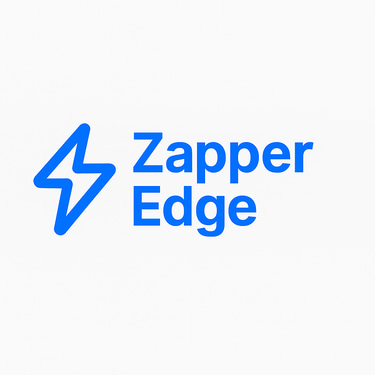Why Business Owners Are Moving From Dropbox to Zapper
"Companies are abandoning Dropbox for Zapper Edge's enterprise security, turbo transfers, and cloud-native control—aren't you due for an upgrade today?"
10/12/20254 min read


Running a software business gives you a front‑row seat to a hard truth: cloud storage bills can explode. As a developer and business owner I used to throw everything into a flat‑rate service like Dropbox because it felt simple. But once our data grew beyond a few terabytes the monthly invoice started to look like a second rent payment. When I explored Azure Blob Storage to save money, I discovered a maze of tiers, retention rules and API calls – a maze our busy team didn’t have time to navigate. That’s why we built Zapper, a storage layer that optimizes costs while keeping things simple for non‑experts.
The Cost Trap of Flat‑Rate Services
Dropbox and similar platforms charge per seat regardless of how much you actually store. The Business Standard plan provides 5 TB of shared storage at $18 per user per month and requires at least three users. Need more control? The Advanced plan jumps to $30 per user per month. Even the individual Plus plan costs about $11.99 per month for 2 TB. It’s predictable, but you’re paying for capacity you may not use and there’s no cheaper cold‑storage option when you’re archiving logs or backups.
Azure Storage: Powerful but Complex
I knew Azure Blob Storage offered lower prices, but the first time I opened the documentation I felt overwhelmed. Azure has multiple tiers with different prices and rules: Hot (~$0.0184/GB/month) for frequently accessed data, Cool (~$0.01/GB/month) for data kept 30 days or more, Cold (~$0.0036/GB/month) for data kept 90 days or more and Archive (~$0.00099/GB/month) for rarely used data. Cold and Archive tiers save money but come with restrictions: if you delete or move data early you pay an early deletion penalty, and retrieval from the Archive tier can take hours. Without automation it’s easy to leave data in the Hot tier and burn money.
How Zapper Solves the Problem
Zapper sits on top of Azure and turns those tiers into a simple story:
1. Intelligent tiering, not guesswork
We start by storing fresh data in the Hot tier for instant access. When our logs and documents age and aren’t touched for a month, Zapper automatically moves them to the cheaper Cool or Cold tiers. For long‑term backups we can choose the Archive tier. This approach follows best practices: Hot, Cool and Cold tiers all deliver millisecond latency while varying in price. Only when data is truly dormant do we archive it and accept the hours‑long rehydration time. Zapper keeps track of retention periods to avoid early deletion fees.
2. Programming hooks that work for developers
Zapper isn’t just a UI. It provides REST endpoints so your apps can trigger storage events, list blobs, check queue status and more. A StorageService class exposes methods like getBlobMetadata to fetch file size and modification time and listBlobsInDirectory to iterate through a folder. You can integrate these hooks into your pipelines, build event‑driven workflows and mask API keys automatically in logs.
3. Cost analytics for non‑finance people
Zapper aggregates storage usage and shows you exactly how many gigabytes live in each tier, what your projected bill is and how much you save by moving data. It flags when a download from the Archive tier could cost extra (standard retrieval is ~$0.02/GB and high priority is ~$0.10/GB) and when early deletion penalties might apply. As a business owner you can finally forecast storage costs instead of waiting for a surprise invoice.
Is Zapper Cheaper? A Real‑World Example
Let’s say your business stores 10 TB of data. If you bought Dropbox’s Business Standard plan, you’d need at least two three‑user teams (6 seats) to cover 10 TB → roughly $216 per month. With Zapper managing Azure tiers, we might distribute that 10 TB like this: 3 TB Hot, 4 TB Cool, 2 TB Cold and 1 TB Archive. Using 2025 Azure prices this combination costs roughly $105.87 per month, far less than Dropbox’s flat fee.
This example also highlights why intelligent tiering matters. If you left all 10 TB in the Hot tier you’d pay about $184 per month — still cheaper than Dropbox but nearly double what Zapper’s life‑cycle rules achieve. Storage cost isn’t one number; it’s a distribution problem.
Beyond Cost: A Better User Experience
Simplified UI
Even though Zapper sits on top of Azure, you don’t see Azure’s complexity. You see your files, their access patterns and clear controls for retention. There’s no need to manually set Azure life‑cycle policies or memorize storage pricing charts. A junior engineer or business analyst can understand where data lives and what it costs.
Secure and scalable
Zapper inherits Azure’s compliance certifications and encryption while adding masking of sensitive keys in logs and queue processing. Whether you’re storing customer uploads, AI agent reports or backups, your data remains secure and the platform scales with your business.
Clear trade‑offs explained
We’re honest about Azure’s limitations. Cool and Cold tiers require minimum stays (30 and 90 days). Archive retrieval can take up to 15 hours. Zapper doesn’t remove those restrictions; it makes them visible and manages them for you. If you need lightning‑fast retrieval of old files, you can choose a higher tier and pay more; if you’re archiving for compliance, you’ll save significant money.
Conclusion: Make the Switch When You’re Ready to Grow
Plain Azure is powerful but requires expertise to avoid hidden costs. Zapper offers the best of both worlds: dramatically lower storage bills over time, APIs for developers and a friendly interface for non‑technical users. If your data is growing and you’re tired of paying for empty space in Dropbox, Zapper is ready to take the load off your team – and your budget.
Connect
Secure file transfers made simple.
Support@zapperedge.com
© 2025. All rights reserved.
